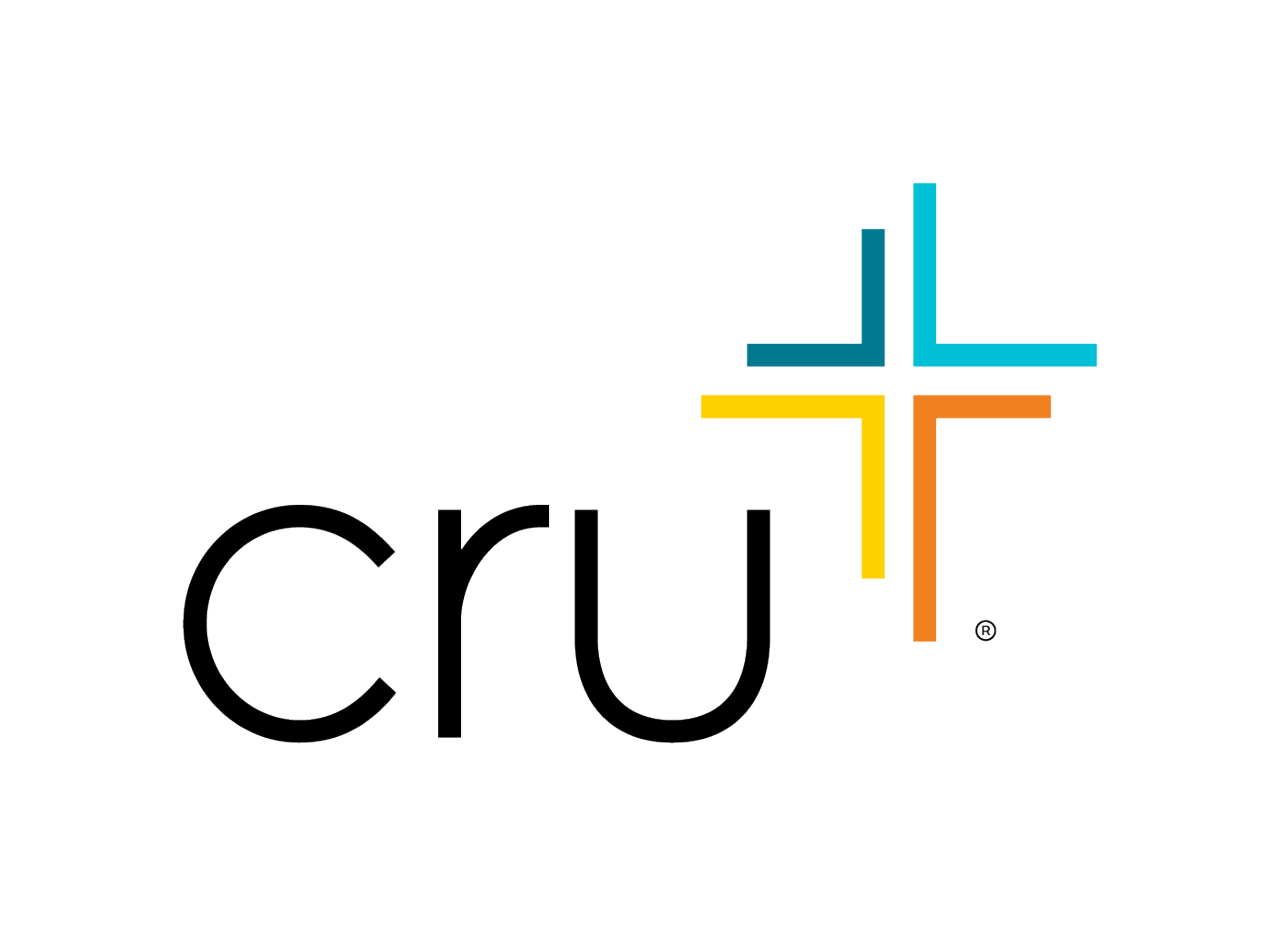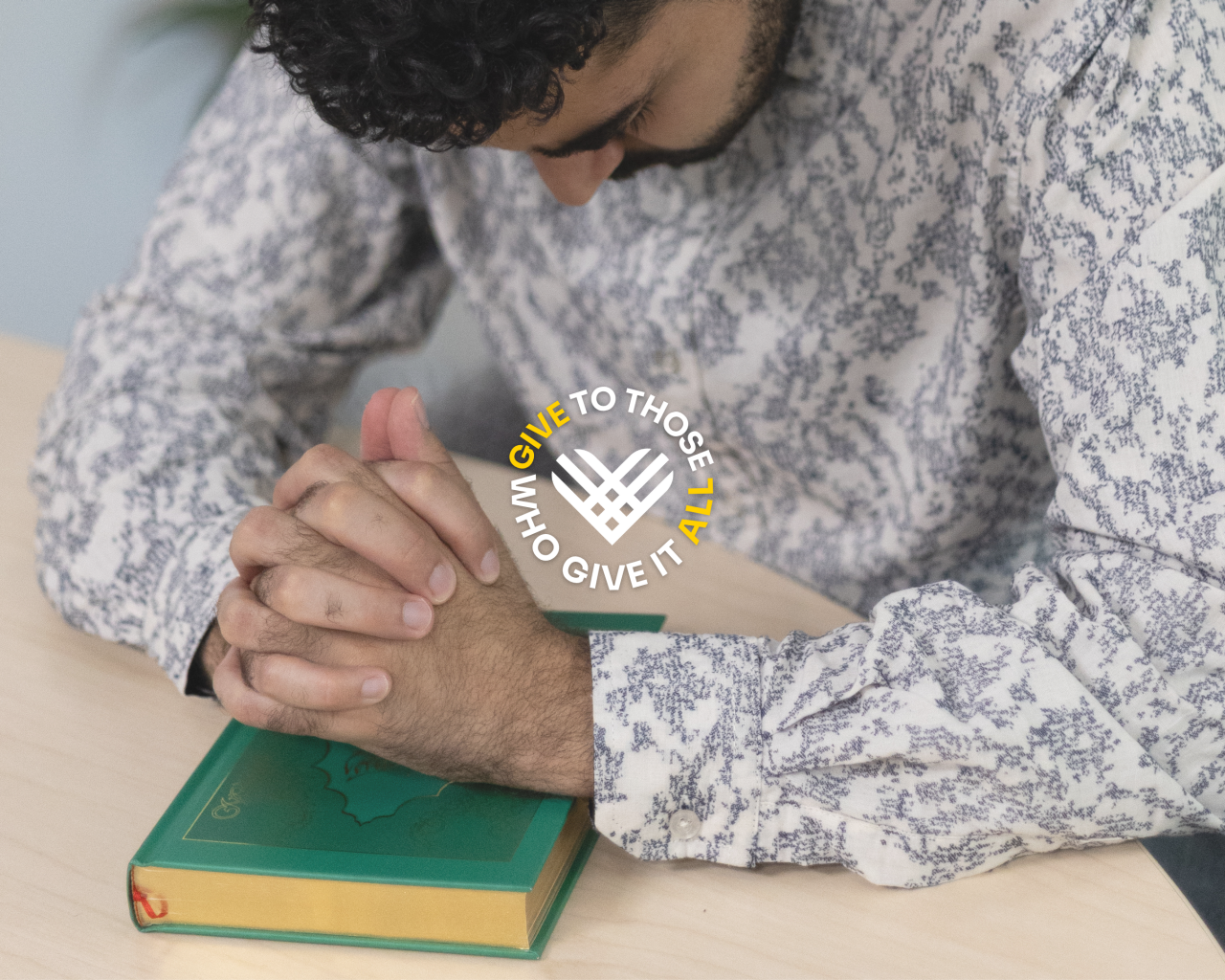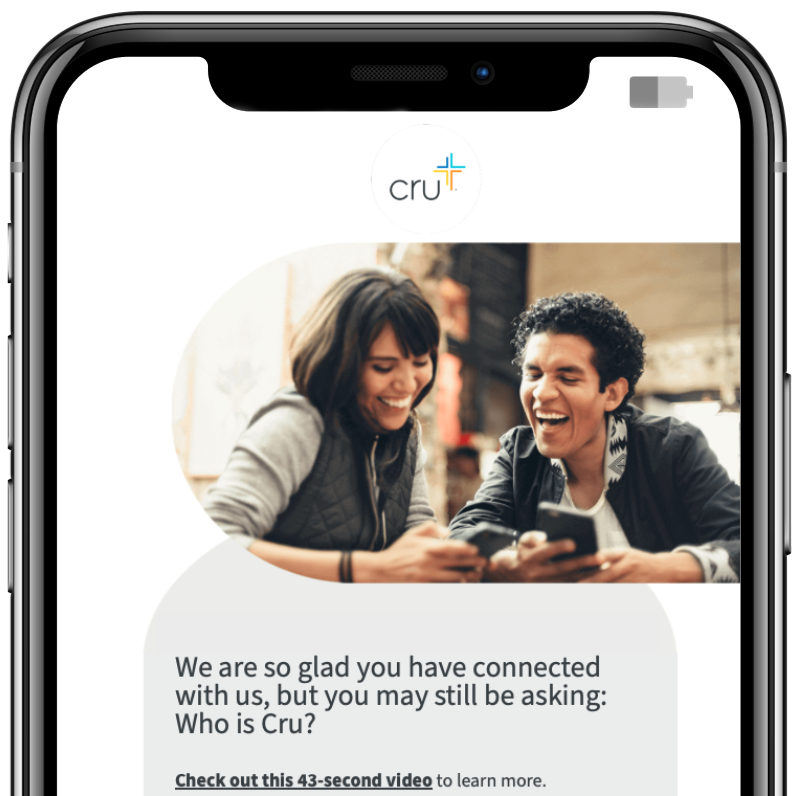26 Great Icebreakers for Your Small Group

Leading a small group of people who want to grow in their faith is a fun and exciting opportunity. But before you can lead others in things like Bible study, prayer and talking about their faith with others, you need to build community within the group. That’s where icebreakers come in.
Icebreakers are essential in creating an environment for everything else you want to do. They make it easier for people to begin getting to know each other. Someone new to your group might presume, for example, that everyone else already knows each other well, whether that is true or not.
Without icebreakers, a small group can be an intimidating environment.
If you're in a hurry, use these links to jump to a specific section:The Effect of Icebreakers
Icebreakers are a simple and fun way to begin helping people bond. Without a sense of belonging and friendship, small groups will not last.
It’s important to use icebreaker activities that are easy to learn, non-threatening and fun. Since bonding is the goal, they should have an element of bonding. When you choose an icebreaker for your small group, think about the people who will be present.
-
What are their personalities like?
-
Are they friends with one another?
-
How will people respond to a game or to being asked questions?
It’s good to know who you’re serving so you can find the best icebreakers for them.
It is also helpful to think about which icebreakers work best during different seasons in the life of the small group. In the beginning stages of a small group, it is helpful to do more get-to-know you games and questions so people feel known. As time progresses, changing up the icebreakers will bring new energy to the group. You can always ask your small group members what types of icebreakers they enjoy most as well and plan from there.
Below are 26 icebreakers for your small group or Bible study. Some options are more helpful for a group that’s in the early stages of forming while others are useful for building relationships in groups that have been together for a while. Use your best judgment about which icebreakers will work best for your group.
The icebreakers included here are mostly based on having small groups of around 10 people. Your small group may be slightly larger than that, and if that’s the case, please factor that in when choosing an appropriate icebreaker. The size of your group will directly impact the time you need to allow.
Icebreaker Questions

Icebreaker questions are simply different ways of getting the people in your small group to talk about themselves. This is an easy way to encourage friendships to form in your group as you help everyone get to know each other.
Jump to an icebreaker
1. Best/worst | 2. Most unique | 3. Two truths and a lie | 4. Get-to-know-you questions | 5. House on fire | 6. Make-believe | 7. Deserted island | 8. Heroes | 9. The M&M’s challenge
1. Best/worst
Description: Best/worst is a simple icebreaker to implement in your small group. Ask each person to share their best and worst moments from the previous week. The entire icebreaker should not take longer than 10-15 minutes depending on how large your group is. This is an easy one to use and gives you good feedback on how the people in your group are doing in a general sense.
Ideal group size: Any size group.
Ideal age group: College age and older.
Great for: Any group. The longer the group has been meeting, the more honest the answers will be. If you use this with a group of people who do not know each other well, the answers may be short and surface-level. Persevere, and people will become more comfortable with each other.
Tips: If people are not engaging with the question, you can prompt them with follow-up questions to help them remember what they did during the week. It can also help if you initiate the icebreaker by answering the question first, giving everyone else time to think about their answers.
2. Most unique
Description: Go around the room and have each person share something that makes him or her unique or unusual, such as “I’ve never left the state I was born in” or “I am one of 10 kids.” The more unique the facts, the more fun the icebreaker becomes.
Ideal group size: Up to 15 people.
Ideal age group: High school and older.
Great for: Newly formed groups.
Tips: Give examples of unique or unusual facts, and be willing to share your answer first. This activity often creates starting points for conversations between members.
3. Two truths and a lie
Description: Have each person make three statements about him or herself: two true statements and one lie. For example: “I’ve never broken a bone. I have five sisters. I was born in Poland.” The group tries to guess which statement is the lie. This icebreaker should not take longer than 10-15 minutes.
Ideal group size: This game can be time consuming, so it’s better with 10 people or fewer. Consider breaking up a big group into a few smaller ones.
Ideal age group: College age and older.
Great for: Newly formed groups.
Tips: The key to making this icebreaker fun is for people to come up with odd/interesting facts about themselves. The more seemingly random the better. Give people a few minutes before starting the icebreaker to come up with the facts about themselves. The lie becomes harder to spot when only a portion of it is false. For example: “I have five sisters” could be the lie if the person only has three sisters.
Keep the pace going by setting a time limit per player.
4. Get-to-know-you questions
Description: Most people will not know each other well in a group that’s just forming. Using this icebreaker helps create friendship and community within the group. Simply ask one of these questions and give everyone a predetermined amount of time to answer.
Your goal is not to answer all of these questions, but we have provided them to give you options.
-
What do you do for fun?
-
What would be your ideal vacation?
-
What is the most memorable activity you did with your family as a child?
-
What quality do you appreciate most in a friend?
-
What is one characteristic you received from your parents you want to keep and one you wish you could change?
-
What is a good thing happening in your life right now? What makes it good?
-
If you knew you could not fail and money were no object, what would you like to do in the next five years?
-
What would you like said about you at your funeral?
-
When, if ever, did God become more than a word to you, and how did that happen?
Ideal group size: Up to 15 people.
Ideal age group: College age and older.
Great for: Newly formed groups.
Tips: If you want to use this icebreaker for your first small group, plan on spending most of the time answering the questions you have chosen from the list.
Give your group space to be open with one another. If the questions above do not fit your group, come up with your own. The important thing is for people to share about themselves and practice listening well.
5. House on fire
Description: Ask the members of your group to imagine the following scenario: “Your house is on fire, and everyone is safe. You have 30 seconds to run through the house and collect three or four articles you want to save. What would you grab? Why?”
After everyone has done this, the group can discuss what they learned about the things they value.
Ideal group size: Up to 20 people.
Ideal age group: High school and older.
Great for: Newly formed groups.
Tips: If you decide to discuss your group members’ answers to the question, allow extra time. You can also come back and discuss the answers in a later meeting. This would be a great icebreaker to use to launch a study about identity or values.
6. Make-believe
Description: Ask the members of your group one of these questions: If you could ...
-
Go anywhere in the world right now, where would you go and why?
-
Talk to anyone in the world (alive or dead), who would it be? Why?
-
Wish one thing and have it come true this year, what would it be? Why?
Ideal group size: Up to 10 people.
Ideal age group: High school and older.
Great for: Newly formed groups.
Tips: This icebreaker may take longer than others, depending on how much people want to share. Plan on 15-20 minutes for this icebreaker.
7. Deserted island
Description: Ask the group: “You’ve been exiled to a deserted island for a year. You are told you may take three things you want, apart from the essentials. What would you take and why?”
Ideal group size: Up to 15 people.
Ideal age group: High school and older.
Great for: Any group.
Tips: This icebreaker is fun when people think of quirky answers. Encourage your group to think outside the box. This icebreaker should not take longer than 10 minutes, and the answers should be relatively short.
8. Heroes
Description: Ask each group member to name three people, past or present, he or she admires. Why?
Or ask: “If you could interview anyone in history, who would you choose and why? What one or two questions would you ask?”
Ideal group size: Up to 10 people.
Ideal age group: Middle school and older.
Great for: Any group.
Tips: People will have interesting answers for these questions. It would be best to utilize this icebreaker for a small group that is focussed on bonding. Members of your group will most likely talk about people who have impacted their lives personally, so it may take longer than other icebreakers.
9. The M&M’s challenge
Description: Pass a bag of M&M’s around and tell everyone to take a few but not to eat them.
Ask each person to share something for every M&M. For example, for every red M&M, share a TV show you like; for every blue M&M, share a place you would love to travel; and for every yellow M&M, share something you appreciate about a friend. Let people eat the M&M’s as they share.
Ideal group size: Up to 15 people.
Ideal age group: High school and older.
Great for: Newly formed groups.
Tips: This icebreaker can become as creative as you want it to be. Come up with any question that works well with your group. If your group needs to bond more, come up with a few questions that bring deeper answers to the surface. If your group needs to laugh together, come up with funny questions. This icebreaker will be a favorite because your group members will get to eat M&M’s.
Icebreaker Games

Games are a fantastic tool to help the members of your small group bond with one another. Never underestimate the power of laughing with people. Games will quickly create a sense of community within your group.
Jump to an icebreaker
10. Personal scavenger hunt | 11. My life in pictures | 12. You write the question | 13. Starburst exchange | 14. Chart your life | 15. Telephone pictionary | 16. Human knot | 17. Line up | 18. I have never | 19. Charades | 20. Did you know? | 21. Jenga questions
10. Personal scavenger hunt
Description: Have group members take five minutes to find the following items in their wallets or purses: Something that ...
-
You’ve had a long time.
-
You’re proud of.
-
Reveals a lot about you.
-
Reminds you of a fun time.
-
Concerns or worries you.
Have each person share the first item. Encourage people to expand on their item and why it fits the topic prompt. For example, if they have an item that reminds them of a fun time, have them share the memory. Go around again sharing the second item and so on until you have gone through each prompt.
Ideal group size: Up to 15 people.
Ideal age group: College age and older.
Great for: Newly formed groups.
Tips: It can be hard to tell how long this icebreaker will take. Some people will expand on their answers, others will not. If the activity is taking too long, you can stop the sharing portion and pick up the icebreaker again during the next week’s meeting.
If people do not have purses or wallets to look through, ask them to find pictures on their phones that might fit the prompts. Or ask them to recall what is in their wallets or purses if they do not have them physically.
11. My life in pictures
Description: Bring a newspaper or magazine and have the group members tear out pictures, articles or anything they think communicates something about themselves. Each person should share his or her choice and the reason for it with the group.
You could use this activity as the basis for a journal collage that people bring to the small group each week.
Ideal group size: Up to 20 people.
Ideal age group: Middle school to college age.
Great for: Launching a creative project.
Tips: This activity works particularly well with girls, but use your judgment as to whether it would work well with your group. This is an icebreaker where people often underestimate the amount of time required.
12. You write the question
Description: Give each person a 3x5 card. Pick a topic and ask them to write down questions about that topic that anyone in the group could answer. For example, if you choose “friendship” as a topic, they can write down questions like “What do you value most in a friend?” or “Who was your best friend growing up and why?”
Pile all the cards face down in the middle of the group and let people draw one. Some topic ideas include jobs, life goals, funny stories, hobbies, family, fears, dating issues, significant relationships and relationship with God. Go around the room until everyone has had a chance to draw and answer a question.
Ideal group size: Up to 15 people.
Ideal age group: College age and older.
Great for: Newly formed groups.
Tips: If there are similar questions written on more than one of the 3x5 cards, have the group come up with a new question on the spot for the person drawing the second one (or third, etc.). This will keep people engaged in the game and give everyone something to do.
13. Starburst exchange
Description: Buy a large bag of Starburst (or some other candy) and give each person the same amount (try 10). Start by stating something you’ve never done that you think everyone else has done.
For example, you might say, “I’ve never had a birthday party,” or some other true statement about yourself that you think everyone else has surely done. Then everyone who has had a birthday party pays you one Starburst. You pay everyone who has not had a party.
Keep playing until everyone has a turn or until someone runs out of Starburst. Obviously, the idea is to end up with the most.
Ideal group size: Up to 20 people.
Ideal age group: Middle school and older.
Great for: Newly formed groups.
Tips: Like the M&M’s challenge, people will like this icebreaker because it involves candy. Bring more for people to eat during the study too. Plan on this icebreaker taking 20-30 minutes, depending on your group size. You can shorten it by not waiting until someone runs out of candy to stop.
Feel free to mix up the candy, but since pieces are passing back and forth, people will probably prefer something wrapped.
14. Chart your life
Description: Give your group members pens and paper. Ask them to draw a line representing the movement of their lives between high times and low ones.
Invite people to think back as far as they can and mark significant moments along the line they have drawn. Ask them to consider the high points and low points, moments of inspiration, moments of despair, leveling-off times, and where they are now.
The charts will probably be a mixture of straight, slanted, jagged and curved lines. At the different points of their lines, have people either draw something or write a phrase to represent that season of their life. Ask people to make at least five different points on their chart to represent significant moments in their lives.
After everyone has drawn their lines, have people share what they’ve drawn and what it means with the group.
Ideal group size: Up to 10 people.
Ideal age group: College age and older.
Great for: Groups that know each other but want to go deeper.
Tips: This one may take longer than many other activities. It might be good to have people draw their charts beforehand to bring with them. If people are willing to share honestly, this can be a great activity to help your group bond. Ask your group to share only one to three points on their graphs to save time, or have people share their whole graphs in smaller groups.
15. Telephone pictionary
Description: Each person in the small group receives a piece of computer paper and a pen. Everyone writes a funny or unusual sentence at the top of their paper. Then, each person hands their piece of paper to the person on their left. Now everyone will have a new piece of paper. Each person draws out a picture of the sentence. They fold the paper so only the picture is seen. The paper gets passed to the left again. This next person will write out a sentence that describes the picture and fold the paper so only the sentence is seen. The game alternates between people drawing and writing out what they see as they continue passing each paper to the left.
The icebreaker ends when each person receives their original paper. Let everyone share their original sentence and the final sentence or picture.
Ideal group size: 5 to 15 people.
Ideal age group: Middle school and older.
Great for: Any group.
Tips: This is a popular icebreaker. It usually produces lots of laughs as everyone shares their papers at the end of the activity. Plan on this game taking 15-20 minutes.
16. Human knot
Description: Have everyone in your group stand in a circle. Each person in the group must hold the hands of two different people who are not immediately standing next to them on their left/right. This creates a human knot. From here, let the group untangle the knot into a circle again. The icebreaker ends when there is no longer a knot.
Ideal group size: 5-15 people.
Ideal age group: Middle school and high school.
Great for: Cooperation and problem-solving.
Tips: Younger people will most likely enjoy this icebreaker more than adults. The game is fun and challenging and will get the group laughing. This icebreaker is fun with a bigger group of people. Plan on the icebreaker taking 5-10 minutes.
17. Line up
Description: This game requires your group to line up in any type of determined order without speaking to one another. For example, ask your group to line up in order of their birthdays, starting with the earliest in the year. Or have them line up in descending birth order, from oldest to youngest. The prompt could be anything, as long as there is something they can order themselves by. The game is engaging because they have to figure out how to line up correctly without talking.
Ideal group size: Up to 20 people.
Ideal age group: High school and older.
Great for: Newly formed groups.
Tips: This game gives insight into how people operate. You will learn how the people in your group solve problems, who takes a leadership role and who does not, and how different personalities respond to the game. This icebreaker can be used to launch a study about leadership or how to respond to obstacles— or topics like that. It can also be used to help your group discover how they behave as a group and how they can grow as a group. It’s a great self-awareness tool.
18. I have never
Description: Set up chairs in a wide circle. Count the number of people at your study and ensure you have one chair less than the total of people. The game is played by having one person stand in the middle of the circle of chairs. This person states something true about themselves. The statement always starts with “I have never,” and then the person states something they have never done. For example, if the person in the middle says, “I have never been to Hawaii,” everyone in a chair who has been to Hawaii must get up and find another seat at least two seats from their own. The person who ends up without a seat must then go in the middle.
Ideal group size: 10 or more people.
Ideal age group: Middle school to college age.
Great for: Newly formed groups.
Tips: Try this icebreaker during warm weather and place chairs outside so there is more room to run. This icebreaker works best in a large, open space. This game is great for helping people get to know one another. Encourage group members to share their names before sharing their statements.
19. Charades
Description: Break up your small group into two teams. Give a topic for the charades game (movies, sports, celebrities, books, etc.). Each person writes four to five charade ideas that relate to the topic on slips of paper. The teams take turns having someone from each team act out as many charades as they can from the slips of paper within a set time limit. The team that has the most correct answers wins the game.
Ideal group size: 10 or more people.
Ideal age group: Middle school and older.
Great for: Any group.
Tips: Have someone volunteer to be the timer each time someone acts out the charades. Plan on this game taking 15-20 minutes.
20. Did you know?
Description: Ask each group member to give you one interesting or unusual fact about themselves before the group meets. Try to discover information that sets each person apart from the others, such as “I have a tugboat named after me,” “I once wrecked the same quarter panel of my car four times,” or “I have a twin.”
Then make a sheet with one fact from each person and a blank space to enter someone’s name beside this fact. Give everyone in the group a sheet and have them find out whose name goes in each blank.
When they find the right person, they must also learn one other fact about that person. This does not need to be written on the paper, it just encourages conversation. At the end, introduce everyone in the group in the order on the list. Give the person who found all the answers first a prize.
Ideal group size: 10-25 people.
Ideal age group: Middle school and older.
Great for: Newly formed groups.
Tips: This icebreaker will work best with people who do not yet know one another well. Plan on this icebreaker taking 20 minutes. Consider turning on music so people cannot hear each other’s answers.
21. Jenga questions
Description: You will need a Jenga game. Cut out small pieces of paper that fit the length of each Jenga block and tape them to each Jenga piece. Then have each group member take a few blocks and write a question on each slip of paper. These questions can vary between light-hearted and deep, but let each person decide what question they want to use. (Examples: How many siblings do you have? If you could see any singer in concert, who would you see? What is your middle name?) Assemble the Jenga game.
Split your small group into two teams and have each person take a turn removing pieces from the Jenga game. Each time a block is moved, the person must answer the question on the slip of paper. Continue playing until one team wins the game.
Ideal group size: Up to 20 people.
Ideal age group: Middle school and older.
Great for: Newly formed groups.
Tips: This game is fun with more people. This activity should take 15-20 minutes. Prompt your group to listen when each person answers the question on their block; otherwise, the game may get loud as people strategize together. It is fun to see the types of questions people write.
Virtual Icebreakers for Video Calls

What have you learned about digital ministry the past few years?
You may have experienced the awkward silence, the multiple-people-talking-at-once problem or a lack of depth in conversations, but another problem is that it can be a challenge to come up with fun and engaging icebreakers in a videoconference format.
Below are virtual icebreaker game ideas that can help you and your small group get to know one another.
Jump to an icebreaker
22. Would you rather? | 23. The three object hunt | 24. Zoom: whiteboard game - write a poem | 25. Let’s create a word cloud! | 26. Pick a song to share!
22. Would you rather?
Description: A fun way to keep participants engaged in virtual meetings is utilizing the chat feature in your video conferencing software. Ask a “Would You Rather?” question aloud (for example, “Would you rather have two extra fingers or two extra toes?”) and tell participants to type their responses in the chat, along with their reason for why. Any funny or interesting responses? Ask that person to share more!
Ideal group size: 10 people or fewer.
Ideal age group: Middle school or older.
Great for: Any group.
23. The three object hunt
Description: Ask everyone to spend five minutes running around their home to find objects that represent how they are currently feeling emotionally, spiritually and physically. Once the group has regathered, have each person share their three items. Let them decide how deep they will go.
Ideal group size: 10 people or fewer.
Ideal age group: High school or older.
Great for: Groups that know each other but want to go deeper.
Tips: It’s best to set a timer for five minutes or less to keep the icebreaker within an appropriate time frame.
24. Zoom: whiteboard game - write a poem
Description: On Zoom, use the “share screen” feature and choose “whiteboard.” Tell the group that you will be writing a poem together and ask them to grab the book closest to them. Instruct them to flip to a specific place (for example, page 15, line 3), and then ask them to click on the “annotate” button, at the top under “view options.” The participants will type out that sentence of the book onto the whiteboard. As the host, make sure no one is typing over anyone else. Read the poem aloud, and have the participants share their book titles in the chat.
Ideal group size: 5-10 people.
Ideal age group: College students.
Great for: Any group.
Tips: This is a fun way to learn what types of books the participants like to read and enjoy creating a story!
25. Let’s create a word cloud!
Description: If you don’t already have one, create a free account on Slido.com. Come up with an event code to be used by participants. Think of a question (see examples below) and create a poll. The answers to the poll will generate a word cloud. During the meeting, share your screen so everyone can see the word cloud forming.
Ideal group size: 10 people or more.
Ideal age group: High school or older.
Great for: Any group.
Tips: Questions could include: “In one word, how would you describe this past week?” “If you could travel anywhere in the world today where would it be?” “What is your favorite ice cream flavor?”
26. Pick a song to share!
Description: At the beginning of the meeting, ask participants to think of a new song they’ve heard recently and type it into the chat. After everyone has put a song in the chat, pull up an animated randomizer like the Wheel of Names and input the song titles. Spin the wheel and see which song the group will listen to. The host will then share their screen to play the chosen song.
Ideal group size: 10 people or more.
Ideal age group: High school or older.
Great for: Any group.
More on Leading a Small Group
We’re so glad you’ve taken the step of faith to lead a group, and we hope these icebreakers will be helpful. Whether it is an engaging question, an innovative game, or a unique activity, the icebreaker you utilize in your small group will create lasting memories for the people you have been called to invest in.
As you can see, icebreaker activities can be as engaging and creative as you make them. Use this list as a starting point to create your own games too.
For other tips and resources, sign up below for our weekly email series for small group leaders.
You can also find more help for leading a small group in the book “The Ultimate Roadtrip.”

























